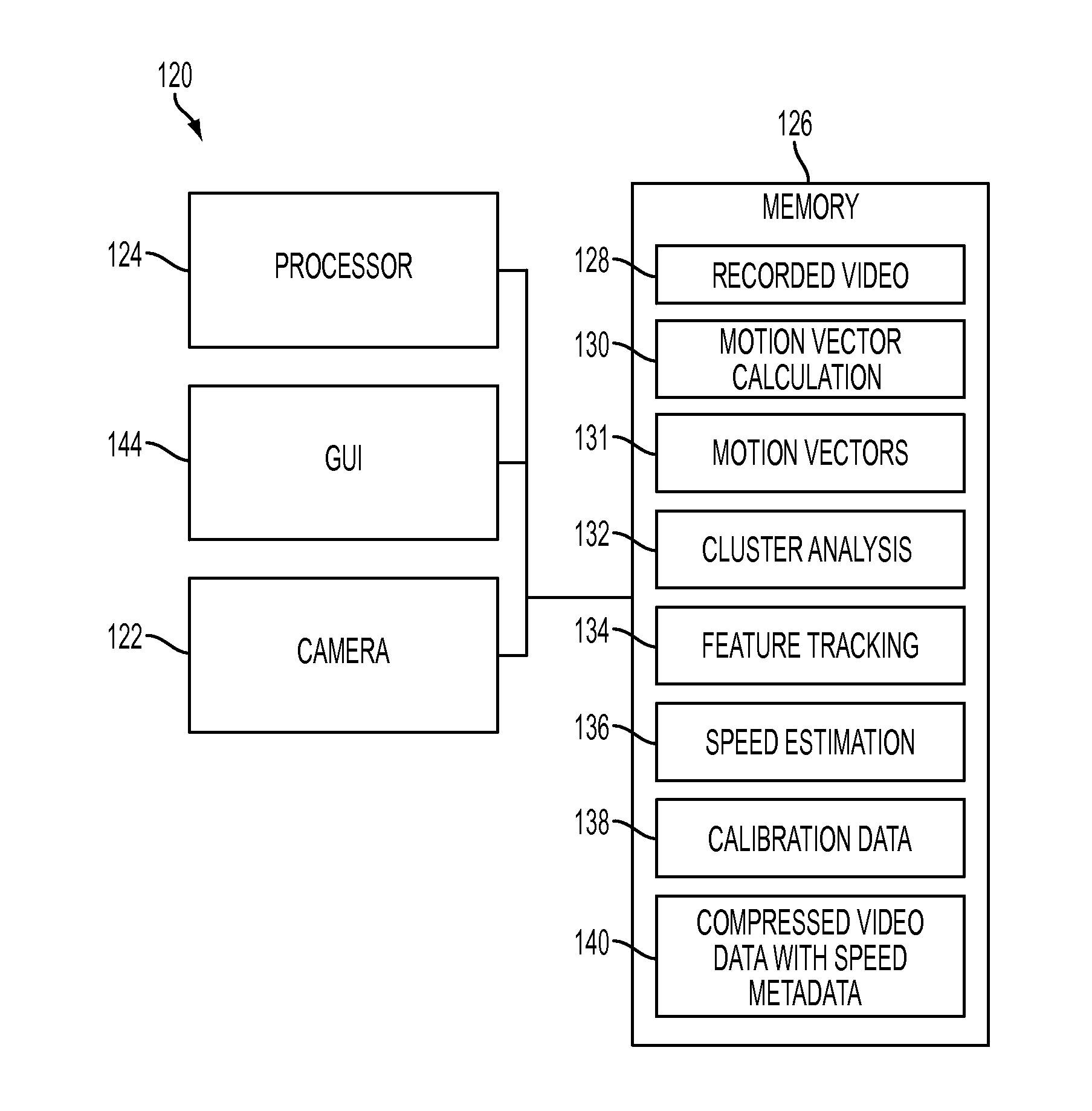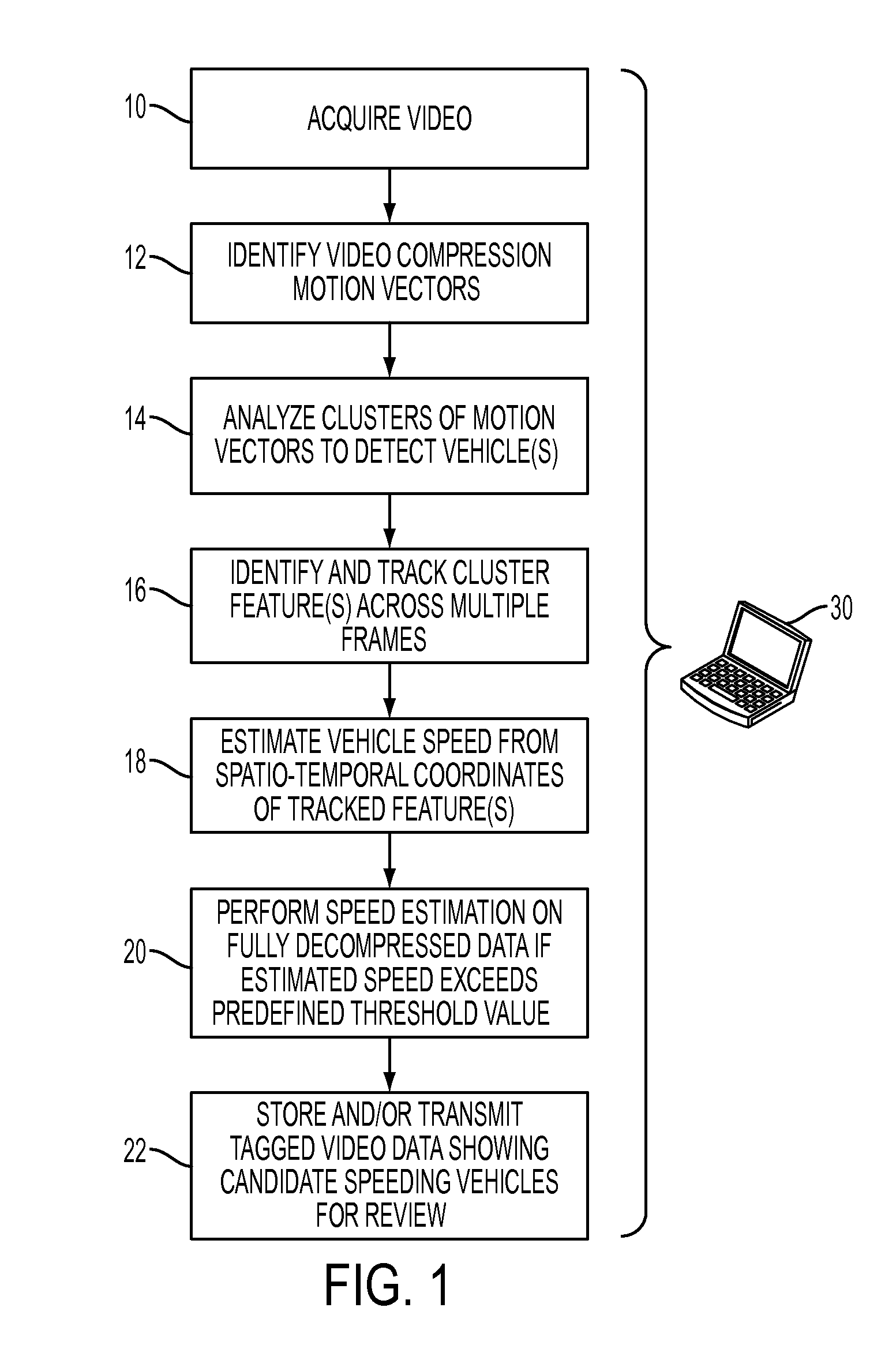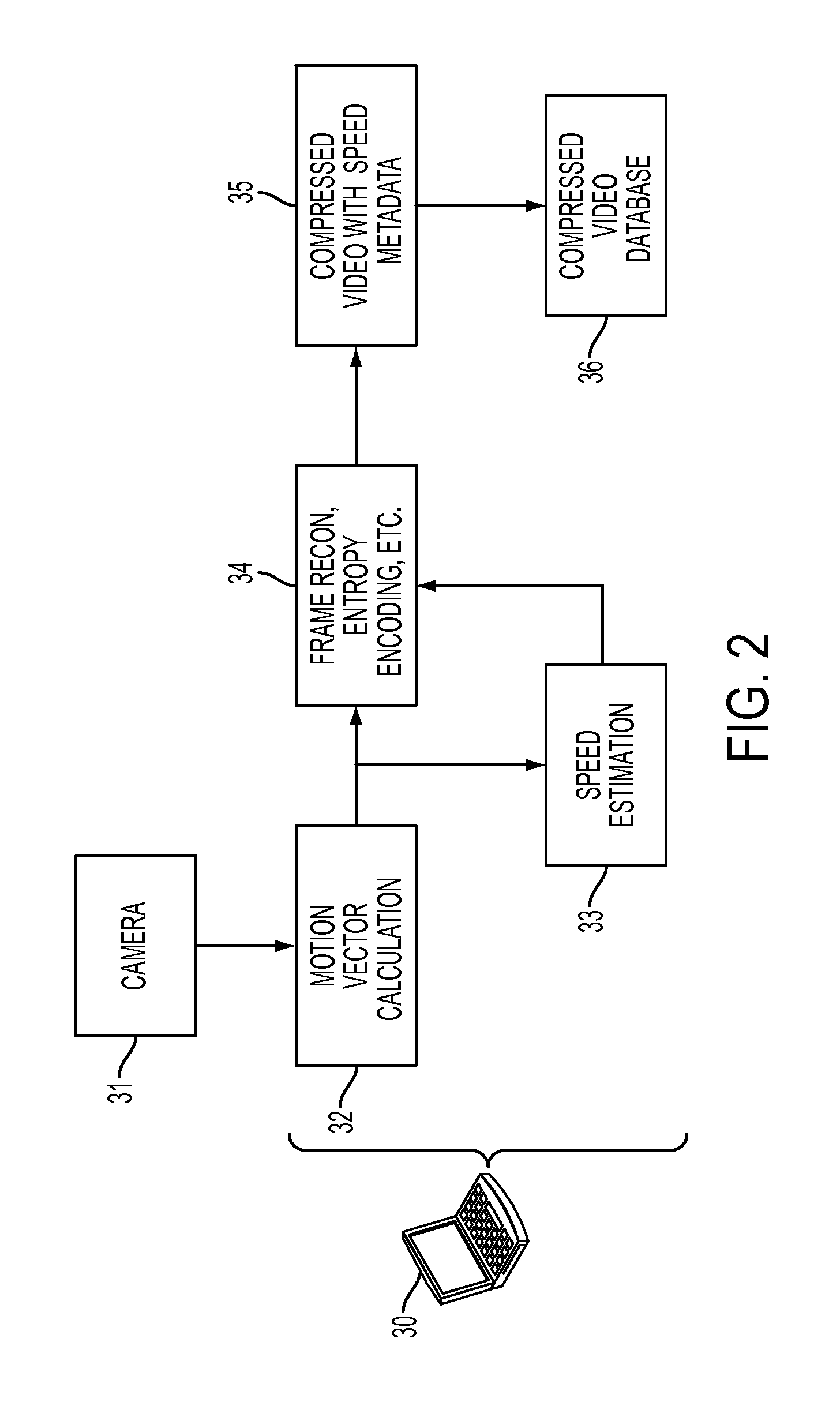Video-based vehicle speed estimation from motion vectors in video streams
a technology of video stream and video, applied in the field of video stream vehicle speed estimation, can solve the problems of increasing the processing burden of off-line video analysis, increasing the complexity associated with screening, and challenging real-time processing at this high data rate, and achieve the effect of facilitating vehicle speed estimation
- Summary
- Abstract
- Description
- Claims
- Application Information
AI Technical Summary
Benefits of technology
Problems solved by technology
Method used
Image
Examples
Embodiment Construction
[0026]The above-described problem is solved by providing automated low-complexity video-based vehicle speed estimation that operates within the compressed video stream to screen video sequences to identify and eliminate clear non-violators and / or identify and select potential violators within a multi-layer speed enforcement system, in which deeper layers provide enhanced accuracy on selected candidate vehicles.
[0027]FIG. 1 illustrates a method for low-complexity automated video-based vehicle speed estimation using video motion vector information, in accordance with one or more features described herein. At 10, video is acquired using, for example, a traffic surveillance camera (e.g., a stationary camera, a camera mounted on a vehicle, or any other suitable camera). Additionally or alternatively, compressed video that was taken with a surveillance camera is received and stored for analysis. For instance, a conventional traffic camera or other video camera may be used for capturing li...
PUM
 Login to View More
Login to View More Abstract
Description
Claims
Application Information
 Login to View More
Login to View More - R&D
- Intellectual Property
- Life Sciences
- Materials
- Tech Scout
- Unparalleled Data Quality
- Higher Quality Content
- 60% Fewer Hallucinations
Browse by: Latest US Patents, China's latest patents, Technical Efficacy Thesaurus, Application Domain, Technology Topic, Popular Technical Reports.
© 2025 PatSnap. All rights reserved.Legal|Privacy policy|Modern Slavery Act Transparency Statement|Sitemap|About US| Contact US: help@patsnap.com



